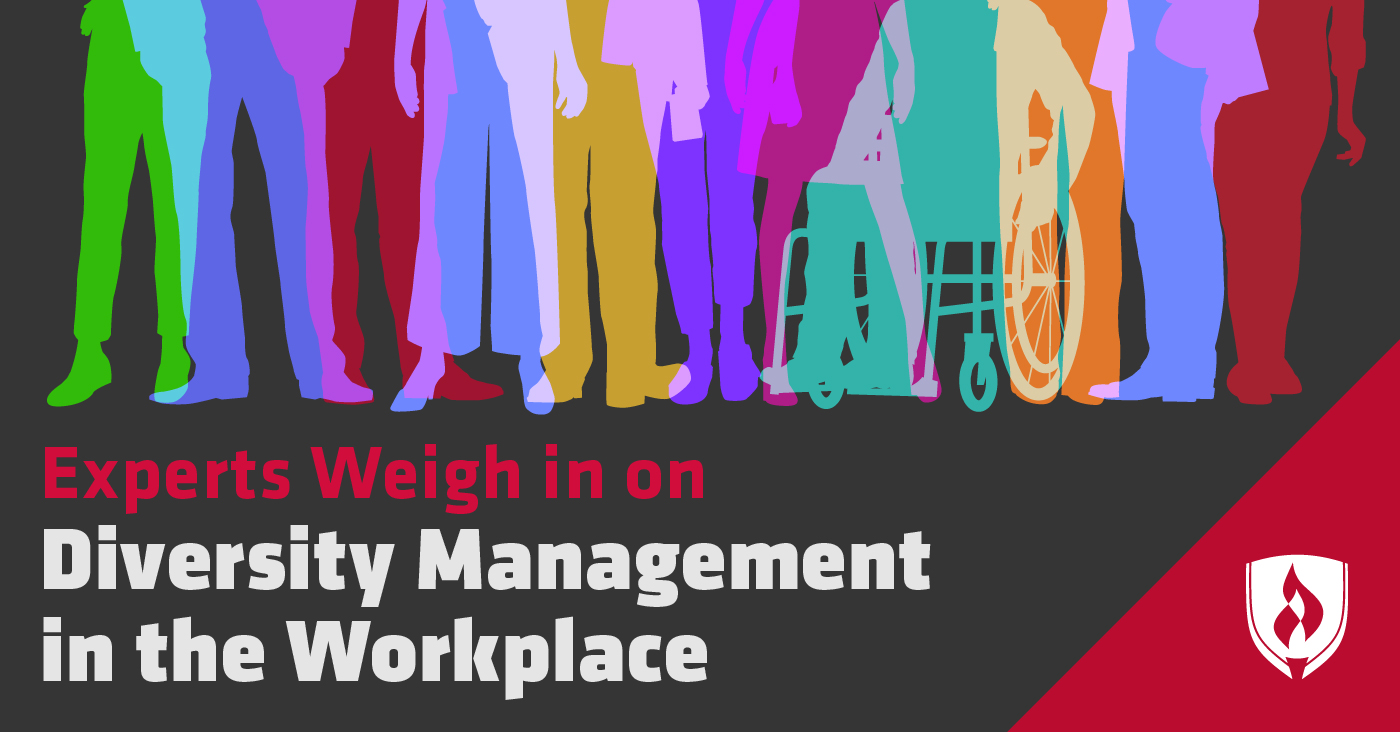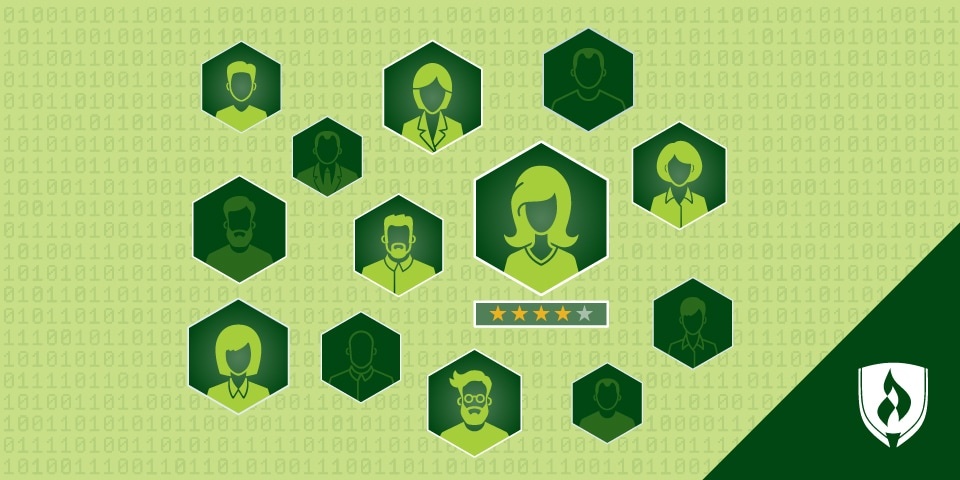Experts Weigh in on Diversity Management in the Workplace
By Hannah Meinke on 10/21/2019

Workplace diversity can be a tricky subject—most are supportive of it and would like to promote a more diverse workforce but often the initiatives and policies implemented can fall flat or feel a little shallow. It takes more than an organization stating they’re an equal opportunity employer on job postings and adding a few posters featuring diverse people holding hands in a circle around a globe to the office bulletin board to foster a strong diverse workforce.
Doing it the right way may seem simple enough—include people from different races, religions, genders and orientations. But there’s much more to it than just demographics. When people of different cultures, beliefs, values and perspectives come together, there is bound to be friction. But by pushing ourselves to understand other points of view, diversity can also lead to great innovation and productivity.
We asked experts from different industries to show us just how diversity can go from an HR checkbox to something that can radically transform the workplace for the better.
Diversity versus the appearance of diversity
Before we talk about how to approach workplace diversity the right way, it’s important to understand how initiatives can fall flat.
One common potential pitfall for workplace diversity initiatives is the appearance of—or outright practice of—tokenism. This is when an organization makes a point to hire a few minorities, often in highly-visible roles, in order to give the appearance of an inclusive workplace without making the deeper changes necessary to ensure all feel welcome and supported. With very little changing fundamentally, it’s a bit like wallpapering over a hole—it might look better but there are deeper issues to address.
Tokenism can lead to a host of issues for an organization. For one, minority hires may feel increased pressure to outperform their colleagues so as not to let “their group” down. Others may feel like they have to defend their qualifications—both to themselves and others—in order to justify being in the position they’re in. Additionally, minority hires can feel like they’re seen in one dimension, and that their primary value to organization is being from a minority group, not their actual capabilities and perspectives.
There’s certainly some gray area and it’s not always easy to distinguish between an earnest effort at inclusivity and tokenism, particularly for those observing outside of an organization. An earnest effort comes down to an organization’s motivations—are they making this hire because they feel obligated to do it? Or are they making a conscious effort to build a diverse workforce by making these hires and actually listening to what their minority employees have to say?
As you can see, this can be a tough nut to crack. There is more to cultivating a diverse workplace than just hiring minorities and taking a surface-level approach. If employers really want to see an impact on their company’s bottom-line, they must learn how to meaningfully engage all of their employees.
So, what is diversity?
An article by the Harvard Business Review identifies two kinds of diversity: inherent and acquired.1 Inherent diversity describes the factors you’re born with that make you different from everyone else—your race, gender, orientation, etc. Acquired diversity describes the ideas and perspectives you gain from your experiences. It’s how a person thinks about global issues because of their time overseas or their sensitivity to moral dilemmas because of the religion they were raised in. Much of the value of a diverse workforce comes from having employees that have a combination of both acquired and inherent diversity as it moves beyond surface-level differences.
“We make it clear to our clients that diversity isn't about tokenism. Instead, diversity is about hiring based purely on skills and merits,” says Stevie James of the recruitment software company Applied. “It's not just about diverse faces, it's about diverse viewpoints.” By focusing on the ways a candidate can contribute a fresh perspective, employers are able to move the conversation beyond outward appearance and into the substance of minority employees’ experiences.
Think beyond the inherent. It is not the variety of skin tones or religions or genders that makes an office more innovative and creative. It is the different thoughts, feelings, histories and struggles that allow a diverse community to challenge one another to come up with solutions that satisfy more than one demographic.
“Without a good diversity management strategy, you may find that you end up with an echo chamber of people who all share the same, or very similar, backgrounds beliefs and values,” says John Crowley editor of People HR. “This is a problem because you will end up sleepwalking into a more narrow-minded way of doing business.”
How should organizations approach building a successful diverse workforce?
With all this in mind, what can organizations do to cultivate a diverse workforce in a meaningful way? We’ve asked HR experts to share their approaches for building a culture of respect and inclusion—here’s what we found:
Start at the top
“Companies looking to increase diversity should start with senior management,” James says. “C-Level executives act as standard-bearers within an organization.”
Whether it’s seeing more minorities on the board or more transparency from your existing executives, starting at the top will set an effective example. Executive level buy-in is essential for ensuring the entire organization takes diversity initiatives seriously.
Include everyone
Along with addressing your executives, Stan Kimer, president of Total Engagement Consulting, says, “Meaningful diversity and inclusion training is provided up and down to everyone in the business so all employees are on board.” Inclusion and engagement take place in person to person interactions—the conversations that make people feel like they belong and that their voice is heard.
Be aware of unconscious bias
People rarely intend to be prejudiced. Carisa Miklusak, CEO of tilr, says it’s important to identify the ways that people—hiring managers in particular—can be biased toward those who look most like them. She says in order to avoid unconscious bias, employers can use consistent scorecards during interviews and focus strictly on skills and accomplishments when reviewing resumes.
Unconscious bias is not an easy thing to address, but training members of your organization to at least be aware of its potential to skew their thinking can help.
Be authentic and clear
If your organization is conducting a diversity training program, the reasons for it should be positive and up front—not a punitive reaction to an incident. If it feels like a punishment or simply a way to appease policy, people won’t take the training seriously. Leadership teams need to be clear about why diversity is important to the organization from both a moral and operational standpoint.
Make room for new ideas
This is just good practice whether you are talking about diversity or not. Make people feel safe sharing novel ideas especially when they are different from the majority. If new ideas are seen as an insult to old ways, your chances of capitalizing on new perspectives and the innovations they may bring are slim.
Nuance matters
When minorities are frequently lumped together as one group, it can be easy to forget that there is a diverse array of opinions, beliefs and experiences among these groups—there is no singular minority viewpoint or experience. Crowley says catering to a diverse workforce requires organizations to take a nuanced approach.
“Actively research the challenges different cultural backgrounds face,” Crowley says. “The workplace challenges faced by some groups will be radically different from those faced by others.”
Reassess
Diversity management policies and training initiatives aren’t things you set once and never adjust. Like with any business process, there’s value in taking the time to assess how the organization is doing and determining if changes need to be made. Conducting targeted employee surveys can help organizations get a better feel for how things are going and if there are currently any issues or blind spots that need to be addressed.
The changing face of business
Diversity in the workplace has certainly made substantial progress—and that’s great news! Familiarity tends to break down barriers between groups of people and diverse opinions can challenge us all to do better work. That said, there’s still progress to be made. If you have a passion for promoting diversity in the workforce, this is a sign you may be well-suited for a career in human resources. Find out if you have any other important qualities in our article, “7 Surefire Signs You Should Be Working in HR.”
1Harvard Business Review, How Diversity Can Drive Innovation, [accessed September 2019] https://hbr.org/2013/12/how-diversity-can-drive-innovation




